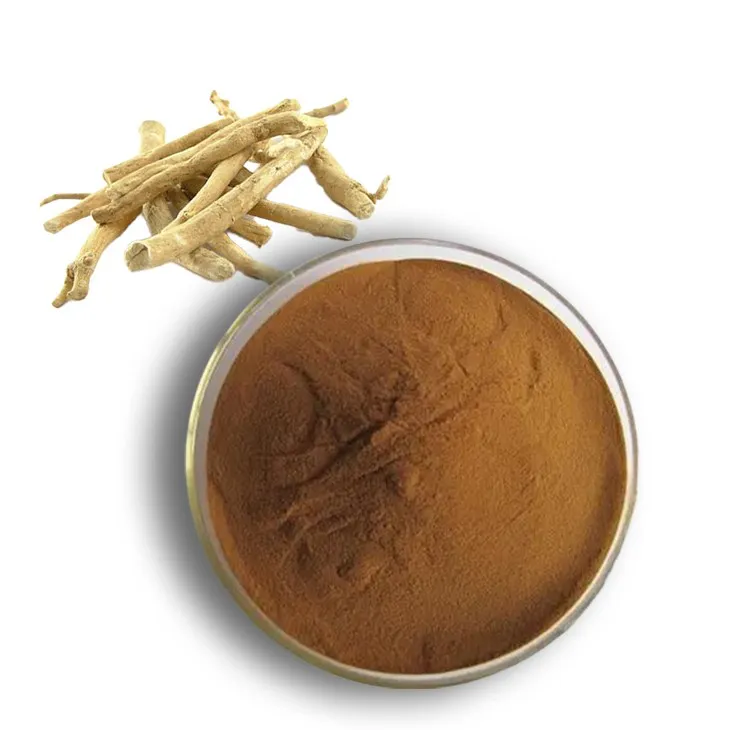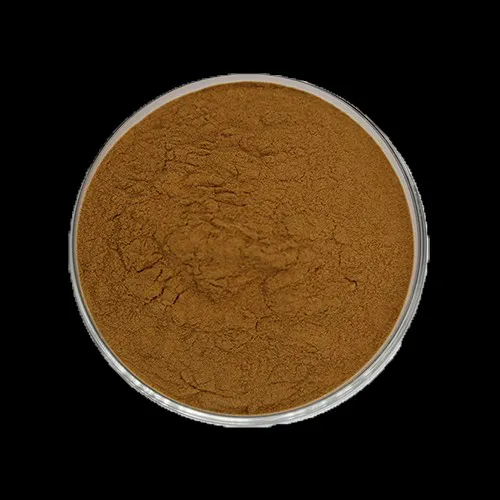- 0086-571-85302990
- sales@greenskybio.com
The best method for extracting Withania somnifera extract.
2024-11-28

1. Introduction
Withania somnifera, also known as Ashwagandha, is a well - known plant in traditional medicine systems, particularly in Ayurveda. It has been used for centuries to treat a variety of ailments, including stress, anxiety, and insomnia. The active compounds in Withania somnifera are responsible for its medicinal properties. Extracts of this plant are increasingly in demand in the pharmaceutical, nutraceutical, and cosmetic industries. Therefore, finding the best method for extracting Withania Somnifera Extract is of great significance.

2. Traditional Extraction Methods
2.1. Decoction
Decoction is one of the most traditional methods of extracting plant extracts. In the case of Withania somnifera, the roots or leaves of the plant are cut into small pieces. These pieces are then boiled in water for a certain period, usually around 15 - 30 minutes. The heat causes the active compounds to dissolve into the water. After boiling, the liquid is filtered to remove the solid plant material. However, this method has some limitations. One of the main drawbacks is that some heat - sensitive compounds may be degraded during the long boiling process. Also, the resulting extract may contain a relatively high amount of impurities, which may require further purification steps.
2.2. Infusion
Infusion is a milder extraction method compared to decoction. For Withania somnifera, the dried plant material (usually the leaves) is placed in hot water and left to steep for a period, typically 5 - 15 minutes. This allows the water to extract the soluble compounds from the plant. The advantage of infusion is that it is a relatively simple and inexpensive method. However, like decoction, it may not be very effective in extracting all the active compounds, especially those that are less soluble in water. Additionally, the resulting extract may have a lower concentration of active ingredients compared to other methods.

3. Modern Extraction Methods
3.1. Soxhlet Extraction
The Soxhlet extraction method is widely used in laboratories for extracting plant extracts. In this method, the Withania somnifera sample (usually in a powdered form) is placed in a thimble inside a Soxhlet apparatus. A solvent, such as ethanol or methanol, is continuously circulated through the sample. The solvent extracts the active compounds from the plant material as it repeatedly washes over it. This method is highly efficient in extracting a wide range of compounds, including those that are difficult to extract by traditional methods. However, Soxhlet extraction can be time - consuming, often taking several hours to complete. Also, the use of organic solvents requires careful handling due to their flammability and toxicity.
3.2. Supercritical Fluid Extraction (SFE)
Supercritical fluid extraction is a relatively new and advanced method for extracting plant extracts. In the case of Withania somnifera, carbon dioxide (CO₂) is often used as the supercritical fluid. CO₂ is maintained in a supercritical state (above its critical temperature and pressure). In this state, it has properties of both a gas and a liquid, which makes it an excellent solvent for extracting a variety of compounds. SFE has several advantages over traditional methods. It is a very clean method as CO₂ is non - toxic, non - flammable, and leaves no residue in the final extract. It can also be highly selective, allowing for the extraction of specific compounds while leaving others behind. Moreover, it can be carried out at relatively low temperatures, which helps to preserve the integrity of heat - sensitive compounds. However, the equipment for SFE is relatively expensive, which may limit its widespread use.
3.3. Microwave - Assisted Extraction (MAE)
Microwave - assisted extraction utilizes microwave energy to enhance the extraction process. For Withania somnifera, the plant material and the solvent are placed in a microwave - compatible vessel. The microwave radiation heats the solvent and the plant material rapidly and evenly. This causes the cell walls of the plant to break down more quickly, releasing the active compounds into the solvent. MAE has the advantage of being a relatively fast extraction method, often reducing the extraction time from hours to minutes. It can also be energy - efficient compared to some traditional methods. However, it requires careful control of the microwave power and extraction time to avoid over - extraction or degradation of the compounds.

4. Factors Affecting the Extraction
4.1. Solvent Selection
The choice of solvent is a crucial factor in extracting Withania Somnifera Extract. Different solvents have different solubilities for the active compounds present in the plant. For example, ethanol and methanol are commonly used solvents as they can dissolve a wide range of compounds. However, water can also be used, especially for extracting water - soluble compounds. The polarity of the solvent plays an important role. Polar solvents are generally better at dissolving polar compounds, while non - polar solvents are more suitable for non - polar compounds. In some cases, a mixture of solvents may be used to achieve a more comprehensive extraction of the active compounds.
4.2. Particle Size of the Plant Material
The particle size of the Withania somnifera material also affects the extraction efficiency. Smaller particle sizes generally result in a larger surface area exposed to the solvent. This allows for more efficient extraction as the solvent can access the active compounds more easily. For example, when using a powdered form of the plant instead of whole roots or leaves, the extraction rate can be significantly increased. However, grinding the plant material too finely may also lead to some problems, such as clogging of the extraction apparatus or increased adsorption of the compounds on the surface of the fine particles.
4.3. Temperature and Pressure
Temperature and pressure play important roles in extraction methods, especially in modern methods such as supercritical fluid extraction. In general, increasing the temperature can enhance the solubility of the compounds in the solvent and speed up the extraction process. However, as mentioned earlier, high temperatures may also cause the degradation of heat - sensitive compounds. In supercritical fluid extraction, maintaining the appropriate pressure is crucial for keeping the fluid in the supercritical state. Different compounds may be extracted optimally at different temperature - pressure combinations.

5. Comparison of Different Methods
When comparing the different extraction methods for Withania somnifera, several aspects need to be considered:
- Efficiency: Modern methods such as Soxhlet extraction, supercritical fluid extraction, and microwave - assisted extraction are generally more efficient in extracting a wider range of compounds compared to traditional methods like decoction and infusion. Soxhlet extraction can extract compounds that are less soluble, supercritical fluid extraction can be highly selective, and microwave - assisted extraction is fast.
- Purity: Supercritical fluid extraction has an advantage in terms of purity as it leaves no residue and can be selective. Soxhlet extraction may require additional purification steps due to the use of organic solvents. Traditional methods like decoction and infusion may result in extracts with more impurities.
- Cost - effectiveness: Infusion and decoction are relatively inexpensive as they require only basic equipment and water. Soxhlet extraction requires organic solvents and relatively complex equipment, increasing the cost. Supercritical fluid extraction has high equipment costs, although it may save on solvent costs in the long run. Microwave - assisted extraction equipment can be moderately priced, and it can save time, which may contribute to cost - effectiveness.
6. Ideal Conditions for Obtaining High - Quality Extract
To obtain the highest - quality Withania Somnifera Extract, a combination of factors needs to be considered:
- For solvent selection, a solvent or solvent mixture that can dissolve a wide range of active compounds should be chosen. For example, a mixture of ethanol and water may be a good option.
- The plant material should be ground to an appropriate particle size, not too fine or too coarse. A particle size of around 1 - 2 mm may be suitable for most extraction methods.
- In terms of temperature and pressure, if using supercritical fluid extraction, the optimal temperature - pressure conditions for the specific compounds of interest should be determined. For other methods, a moderate temperature should be maintained to avoid degradation of heat - sensitive compounds.
- When choosing an extraction method, a balance between efficiency, purity, and cost - effectiveness should be struck. For large - scale production, cost - effectiveness may be a more important factor, while for research purposes, purity and efficiency may be more crucial.
7. Conclusion
In conclusion, there are various methods for extracting Withania somnifera extract, each with its own advantages and disadvantages. Traditional methods like decoction and infusion are simple and inexpensive but may not be as efficient or pure as modern methods. Modern methods such as Soxhlet extraction, supercritical fluid extraction, and microwave - assisted extraction offer higher efficiency, better purity in some cases, but may have higher costs or require more complex equipment. The ideal extraction method depends on various factors, including the intended use of the extract, the scale of production, and the importance of factors such as efficiency, purity, and cost - effectiveness. By carefully considering these factors, it is possible to obtain a high - quality Withania somnifera extract that can be used in a variety of applications in the pharmaceutical, nutraceutical, and cosmetic industries.
FAQ:
What are the common traditional methods for extracting Withania somnifera extract?
Some common traditional methods include maceration and decoction. Maceration involves soaking the plant material in a solvent (such as ethanol or water) for an extended period, usually several days to weeks. Decoction is a process where the plant material is boiled in water for a certain time. However, these traditional methods may have limitations in terms of efficiency and precision compared to modern techniques.
What modern extraction techniques can be used for Withania somnifera extract?
Modern techniques include supercritical fluid extraction (SFE), microwave - assisted extraction (MAE), and ultrasonic - assisted extraction (UAE). SFE uses supercritical fluids, often carbon dioxide, which has properties between a gas and a liquid at specific conditions. It offers high selectivity and can produce extracts with high purity. MAE utilizes microwave energy to heat the solvent and plant material, speeding up the extraction process. UAE uses ultrasonic waves to create cavitation, which helps in the release of active compounds from the plant matrix.
How does the efficiency of different extraction methods compare?
The efficiency of extraction methods can be measured in terms of the amount of active compounds extracted in a given time. Modern methods like SFE, MAE, and UAE generally tend to be more efficient than traditional methods. For example, UAE can significantly reduce the extraction time compared to maceration. SFE can often achieve a higher yield of the desired compounds in a shorter time and with less solvent usage compared to decoction. However, the efficiency also depends on factors such as the type of solvent used, the particle size of the plant material, and the extraction conditions (temperature, pressure, etc.).
What factors affect the purity of Withania somnifera extract?
Several factors affect the purity of the extract. The extraction method itself plays a crucial role. For instance, SFE can produce a relatively pure extract as it can selectively extract the desired compounds. The quality of the starting plant material is also important. If the Withania somnifera plant is contaminated or of low quality, it will likely result in a less pure extract. Additionally, the purification steps following extraction, such as filtration and chromatography, can enhance the purity of the extract. The solvent used for extraction can also influence purity, as some solvents may extract unwanted compounds along with the desired ones.
How can cost - effectiveness be achieved in the extraction of Withania somnifera extract?
To achieve cost - effectiveness, one can consider several aspects. Firstly, choosing an extraction method that requires less expensive equipment and solvents can be beneficial. For example, UAE may be more cost - effective than SFE in some cases as the equipment for UAE is relatively less expensive. Optimizing the extraction conditions to reduce energy consumption and solvent usage is also important. Using a locally sourced and abundant Withania somnifera plant can reduce the cost of raw materials. Additionally, minimizing the number of purification steps while still maintaining an acceptable level of purity can also contribute to cost - effectiveness.
Related literature
- Advances in Withania Somnifera Extraction: A Review of Modern Techniques"
- "Comparative Study of Traditional and Modern Extraction Methods for Withania Somnifera"
- "Optimizing the Purity of Withania Somnifera Extract: An In - Depth Analysis"
- ▶ Hesperidin
- ▶ citrus bioflavonoids
- ▶ plant extract
- ▶ lycopene
- ▶ Diosmin
- ▶ Grape seed extract
- ▶ Sea buckthorn Juice Powder
- ▶ Beetroot powder
- ▶ Hops Extract
- ▶ Artichoke Extract
- ▶ Reishi mushroom extract
- ▶ Astaxanthin
- ▶ Green Tea Extract
- ▶ Curcumin Extract
- ▶ Horse Chestnut Extract
- ▶ Other Problems
- ▶ Boswellia Serrata Extract
- ▶ Resveratrol Extract
- ▶ Marigold Extract
- ▶ Grape Leaf Extract
- ▶ blog3
- ▶ blog4
-
Nature's best β - carotene.
2024-11-28
-
Standard - process Coenzyme Q10.
2024-11-28
-
Bulk purchase of pomegranate extract.
2024-11-28
-
Extraction process of bilberry extract.
2024-11-28
-
Manufacturers of Euphrasia Extract.
2024-11-28
-
Chinese peppermint oil powder factories.
2024-11-28
-
Carrageenan Extract Powder
2024-11-28
-
Hawthorn powder
2024-11-28
-
Saffron Extract Powder
2024-11-28
-
Almond Extract Powder
2024-11-28
-
Curcuma Longa Extract
2024-11-28
-
Grape Leaf Extract
2024-11-28
-
White Peony Extract
2024-11-28
-
Ivy Extract
2024-11-28
-
Coconut Water Powder
2024-11-28
-
Genistein
2024-11-28





















